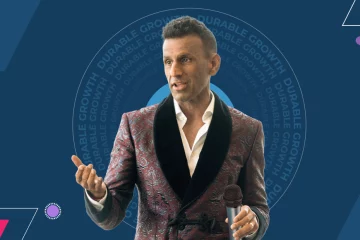
LinkedIn CEO Jeff Weiner wrote an excellent post on managing compassionately yesterday.
This one really hit home for me. At my last company, LiveOffice, one of our three company values was Compassion.
On the day about three years ago that I ran a committee to define our company values (a classic Office Space / Office moment 🙂 ), I remember some skeptical looks when I threw Compassion on the whiteboard for consideration. And my fellow CEO friends often told me Compassion seemed odd compared to standard values like “Customer-Focus” or “Winning” (I can see the Successories posters now).
But as I explained to our team that day and still believe, Compassion is a powerful force in business in that it can help create organizations that understand their stakeholders better. More importantly, though, for me it was just the right thing to do.
After we defined the value, the key question was how to implement Compassion in a company. The organizing principle was the “Golden Rule” (do unto others as you’d have them do unto you – or similar phrasing).
We ended up defining a few different “use cases” for the Golden Rule, for each of our stakeholders.
- Customers
If a customer calls one of us and is angry, we could easily match their rage with our own. Or we could pretend to be nice to the customer and complain behind their back. Or, we could be compassionate and try to understand why the customer could be angry:
- Maybe the last person from our company that dealt with her was rude?
- Maybe her boss is on her case and she’s worried about her job?
- Maybe her family member is ill or worse?
In short, rather than demonizing the customer, we could humanize her.
- Partners / Vendors
Companies are funny about partners. When they are the small fish, they often complain about how their big fish partner doesn’t treat them well. Yet, when they are driving the relationship and in control (most notably when they are a customer of a vendor), they implement all of the bad behavior they complained about. This is pretty simple and comes down to things like:
- Responding to partners in a timely fashion
- Being transparent with partners about our priorities and where they fit in
- Trying to translate how our business works in ways our partner would understand
- Teammates
Most importantly, we tried to implement Compassion internally. This was a fruitful discussion, since so much of what happens in typical companies is the opposite of compassion. Some examples we came up with included:
- If a teammate is gossiping about another, try to stop it or at the least, don’t fan the flames
- Avoid stereotypes (e.g., “sales people are unethical” or “engineers can’t talk to customers”) that put teammates into boxes
- Always assume our teammates have good intentions
And the big test for us in Compassion came when any of the above groups acted with dis-Compassion. In these cases, we constantly tried to remind ourselves that the Golden Rule is NOT “do unto others as they do unto you.” That’s eye-for-an-eye and is no way to live.



